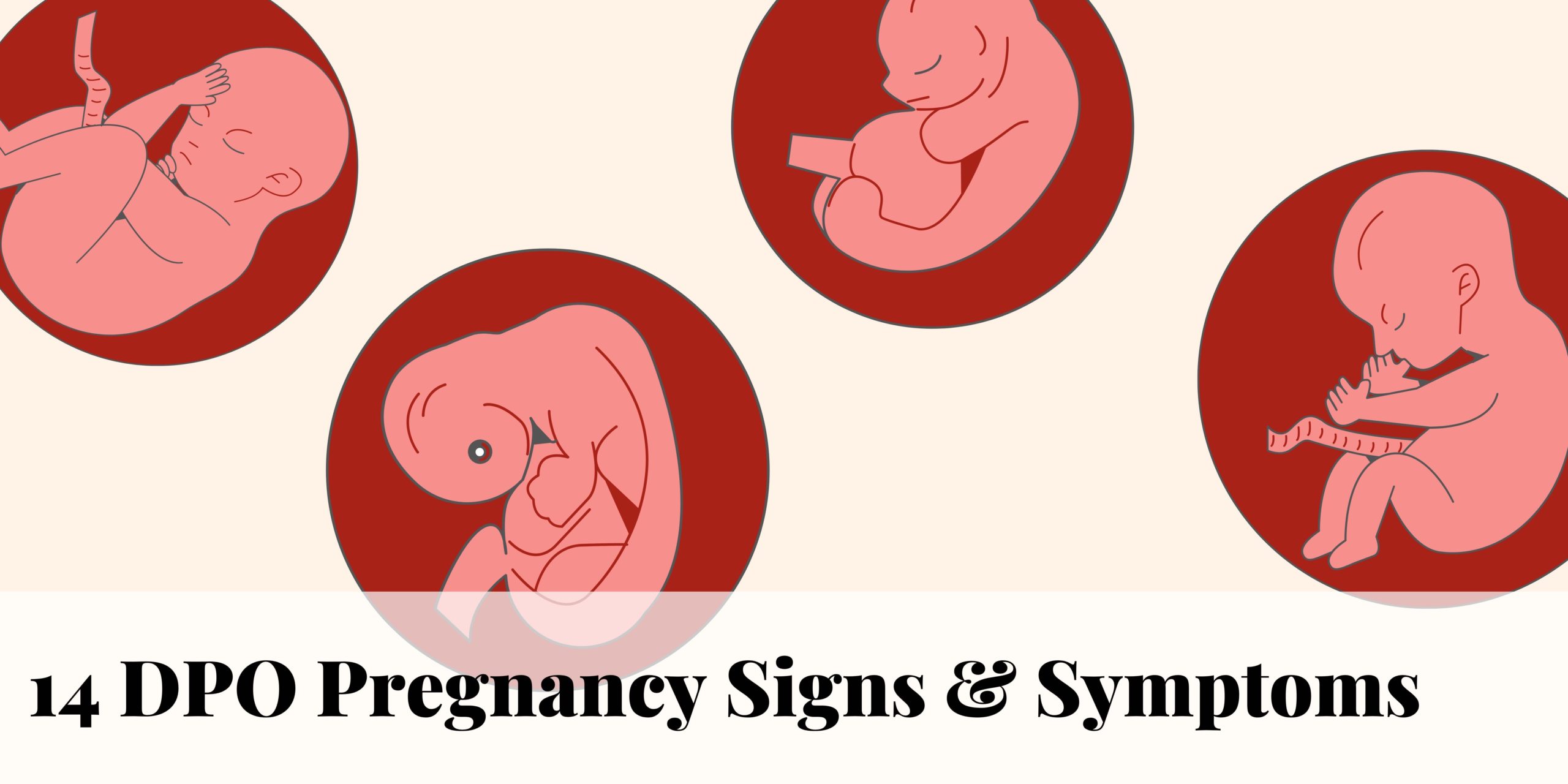
Are you trying to conceive and hit the 14th-day mark on your cycle? This is a very important milestone as it is likely to give accurate results as compared to testing on previous days. Please read below for more information on 14 DPO and 14DPO symptoms to see what to look out for.
What is 14 DPO?
14 DPO means 14 Days Post Ovulation. It also indicates you’re in the luteal phase of your menstrual cycle. The luteal phase is when the ovulated egg goes down the fallopian tube. You may notice a positive indication on your pregnancy test this month if the egg was fertilized and implanted into your uterine lining at this stage in your cycle.
During 14 DPO, the majority of women detect a positive pregnancy test result. This is because the human chorionic gonadotropin hormone (hCG) levels are generally high enough to be identified by a pregnancy test and lead to a positive result. You can also read about what to expect at 13 DPO here.
14 DPO Menstruation and Ovulation Phases
Menstruation takes place in a cycle. Each woman’s cycle is different, as is the length of her period. Ovulation can occur anywhere between 11 and 21 days into your period, depending on your cycle. Female reproductive hormones, estrogen and progesterone, have a role in these occurrences. When implantation happens, another hormone is released, which plays a critical role in the development of pregnancy symptoms and indicators.
14 DPO and no period?
Human chorionic gonadotropin (hCG) levels grow to considerable levels in the body after 14 days following ovulation. Despite the fact that hCG is the cause of pregnancy symptoms and signs, the incidence of these symptoms and signs may vary from person to person. Ovulation is a natural process in a female body and it is divided into four simple stages.
Menstrual Phases
The first part of the menstrual cycle is called the menstrual phase. It’s also the time of the month when women begin their period. When an egg from the previous cycle is not fertilized, this process begins. Because there haven’t been a pregnancy, estrogen and progesterone levels significantly plummeted. The thicker uterine lining, which would normally sustain a pregnancy, is no longer needed and sheds via the vaginal canal. A mix of blood, mucus, and tissue is released from the uterus during a period. This stage usually lasts between 4 and 7 days.
Follicular (Pre-ovulatory) Phase
On the first day of a period, the follicular phase begins. The menstrual cycle overlaps in certain ways. It comes to an end when ovulation happens. The program commences when the hypothalamus instructs the pituitary gland to release follicle-stimulating hormone (FSH). This hormone causes the ovaries to generate 5 to 20 follicles, which are tiny sacs. An immature egg is found in each follicle. Only the healthiest egg will develop in the end. The follicles that remain are reabsorbed by the body. The mature follicle triggers an increase in estrogen, which thickens the uterine lining. This provides an embryo with a nutrient-rich environment upon which to flourish.
Other hormones, such as testosterone, are released at the completion of the follicular phase. Increased vaginal lubrication and an increase in sexual desire are the results of these hormonal changes. This is a natural method proposed by the human body to assist in synchronizing intercourse in order to achieve conception. This process extends 10-17 days from the start of the menstruation cycle.
Ovulatory Phase
During the follicular phase, rising hormone levels cause the pituitary gland to release luteinizing hormone (LH). This is what initiates the ovulation process. The release of an egg from the dominant follicle within an ovary into the fallopian tube. It is fertilized by sperm, known as ovulation. A woman may only become pregnant during this period of her menstrual cycle. Women who are intending a pregnancy or who are following the “rhythm method” to avoid pregnancy track their cycles using a variety of measures, including body temperature, vaginal secretions, and ovulation tests.
An egg can be viable for up to one day after it is released, whereas sperm can be viable for up to 3-5 days. The few days coming up to ovulation are thus the most fertile of the cycle. Therefore, conception is most likely to happen when sperm are present immediately before or after ovulation.
Luteal Phase
The Ovulation Cycle lasts around 14 days during this stage. The major hormone of the follicular phase, estrogen, decreases during this phase, while progesterone levels rise. The purpose of estrogen was to fertilize and stimulate the creation of the uterine lining, and now the job of progesterone is to keep that lining in place. If pregnancy occurs, the body produces human Chorionic Gonadotropin (hCG). Human Chorionic Gonadotropin (hCG) is a hormone generated by the embryo that may be detected in urine and blood tests 2 weeks after implantation or around 4 to 5 weeks after the first day of the last period. Increased progesterone levels also tell the ovaries to stop producing eggs for the time being.
The corpus luteum decreases and is resorbed if pregnancy does not occur. This produces a drop in estrogen and progesterone levels, resulting in the commencement of the period. During the course of the period, the uterine lining will shed. If conception does not happen during this time, premenstrual syndrome (PMS) symptoms usually develop.
14 DPO Symptoms
When there is no pregnancy, progesterone levels fall and the menstrual period begins. When a woman is pregnant, progesterone levels remain high to support the fetus, which delays the start of her menstruation cycle. Before the delayed period, there may or may not be indicators of pregnancy. Any symptoms that may be encountered are the consequence of hormonal changes as the body prepares to create a baby. These bodily changes might differ from one individual to the next, and even from one pregnancy to the next.
Breast Tenderness or Swelling
The breasts, like the ovaries, are influenced by female reproductive hormones estrogen and progesterone. The breasts are affected by an increase in progesterone during pregnancy. As a result, breast alterations are noticeable during the first few weeks of pregnancy. The breasts begin to grow in size, and the nipples and areola begin to darken. The breasts will become more sensitive. They’ll be soft to the touch. These symptoms start to fade as the pregnancy advances.
Fatigue during early pregnancy
Fatigue is another typical symptom that many pregnant women experience. The level of progesterone also rises after implantation. Progesterone is a crucial hormone for a healthy pregnancy. Meanwhile, an increase in progesterone hormones has been related to exhaustion. Changes in the blood flow to the uterus, on the other hand, are modified. As a result, the circulatory system of the body is affected. Low sugar levels, on the other hand, may produce fatigue. The body will eventually become fatigued due to an increase in the need for sugar, oxygen, and changes in the circulatory system. Eating meals high in iron and protein, drinking enough water, and getting plenty of rest will help feel less exhausted all through pregnancy.
Nausea and morning sickness at the 2-week mark
Morning sickness commonly causes pregnancy anxiety. Following implantation, the level of hCG rises significantly, as indicated earlier. This is what makes you feel nauseous. Morning sickness describes nausea caused by pregnancy, however, it can occur at any time of the day. It’s also been proven that women who have more nausea during pregnancy have higher amounts of hCG hormones.
As a result, nausea around 14 DPO might be one of the pregnancy indicators. Fortunately, throughout the 13–14 weeks of your pregnancy, these symptoms will subside. During pregnancy, around 70% of women will suffer nausea, vomiting, and other digestive issues (R). A combination of rising hormones and fluctuating blood sugar levels might be at fault, so eating small, frequent meals aids in the progress of this symptom.
Food Cravings during pregnancy
Hormonal changes have an impact on the meals that are ingested. You could begin to like or dislike specific foods, tastes, or scents. Chocolates, sweets, salty food, spicy food, citrus food, coffee, ice, and ice cream are all common food desires. The food cravings have no clear cause, although they are assumed to be a marker of the mother’s nutritional insufficiency. Because there is such a strong need for nutrients such as minerals and vitamins during pregnancy, a hunger for certain meals develops. Meanwhile, the female reproductive chemicals estrogen and progesterone influence the brain and are connected to these cravings.
Food cravings indicate the changes in hormones however, the cravings develop and decrease throughout the course of pregnancy.
Increased Urination frequency at 14 DPO
You could find yourself going to the restroom more frequently during the day and night. The kidneys are working overtime to clean out all of the hormones and fluids that are surging through the body. This is a good opportunity to mention that hydration is extremely important during pregnancy, so drinking between 8 and 12 eight-ounce glasses of water each day is essential.
Will I experience Cramps?
Spasms or cramps may feel similar to the cramps you get during your menstruation cycle. The changes in the uterus following implantation are the cause of cramping. As a result, you’ll have aches in your lower abdomen. This isn’t the only sign of pregnancy because cramps aren’t exclusive to pregnancy.
Spotting during 14DPO
You should expect to see very mild spotting at the 2-week mark. About 25% of women experience this throughout the entire pregnancy. However, everyone is different and you should mention this to your doctor, especially if the bleeding becomes heavy.
Cervical Mucus Quality
Your discharge may have been cloudy in the previous weeks. However, you may notice a thicker consistency at around this time if you tested positive. Your cervical mucus starts off as wet and clear and then becomes egg white.
14 DPO Diarrhea
Diarrhea at 14 DPO is not a common sign of pregnancy. However, it can occur due to hormonal changes. If your stool contains blood or pus, contact your medical professional immediately.
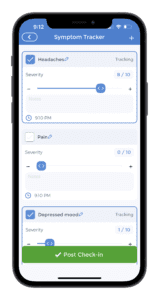
Do you have Headaches?
You may experience mild tension headaches at this time from increased blood flow. Get plenty of rest and drink plenty of water during his time.
Testing for 14 DPO
Human chorionic gonadotropin (hCG) is a hormone that is detected by pregnancy testing (hCG). The hormone hCG is produced by cells in the placenta. The most common way to test for 14 DPO is using an at-home pregnancy test.
When the urine is applied to the stick, the presence of hCG is detected if the woman is pregnant. hCG binds to mobile antibodies, these antibodies also have an enzyme attached to them. Immobilized antibodies in the test zone bind to hCG. The enzyme on the first antibody changes the test line color. Excess antibodies bind to immobilized antibodies in the control zone to show the test worked correctly.
In recent years, digital pregnancy tests have grown more prevalent. Though they may appear to be different on the surface, they function in the same way. They merely employ a sensor to detect color changes and determine whether or not to show the words “pregnancy” or “not pregnant” on their screens.
14DPO BFN and 14DPO BFP
There is a lot of pregnancy anxiety about a BFP or BFN. BFP stands for “big fat positive,” whereas BFN stands for “big fat negative.” Even if you are pregnant, the absence of symptoms at 14 DPO is conceivable. Similarly, while you may be pregnant, you may not receive a positive pregnancy test result.
Each pregnancy is unique in its own way. As a result, the symptoms you experience may or may not be present in another person. It’s also possible that you won’t have any symptoms at all. In this setting, the link between symptoms, pregnancy, and BFN or BFP is explored in all feasible ways. This implies there’s a possibility you’ll become pregnant with symptoms and have a BFP, or you’ll get pregnant with no symptoms and have a BFN.
Did you get a Negative Test?
At 14 DPO, a negative test isn’t always a deal-breaker. If your menstruation cycle is late, wait a few days before testing again. The sensitivity of your test, when implantation occurred, and even what time of day you did the test might all affect your outcome. Testing in the morning is best as the urine may include more hormones than in the middle of the day.
Congratulations if you receive a positive throughout this round of trying to conceive! To confirm your pregnancy, contact your healthcare provider for a blood test and ultrasound. While home tests are very reliable, a blood test can determine the number of hormones in your system and track their progression. Even if you decide not to confirm this way, calling your doctor and scheduling your first prenatal checkup is a smart idea.
Managing 14 DPO
It’s extremely hard to keep everything in our heads at the same time. We have a tendency to forget things we need to keep track of, from tiny details to major monthly goals. Keeping track of your health is beneficial to you, your loved ones, and, if you’ve received a BFP, your baby! Your menstrual cycle is a crucial element of health fluctuations for a variety of reasons, especially if you are a woman. When it comes to pregnancy and expectations, as well as family planning, keeping track of your menstrual cycle is essential to achieving your aim of becoming pregnant.
CareClinic is an all-in-one personal health platform, provides numerous valuable features to help you maintain a personal health record. Create a self-care action plan and log all medications, supplements, diet, physical activities, and therapies you receive. You can even set your own healthcare team that manages your health and pregnancy. Add your physician, obstetrician, registered nurse, and family members to keep them in the loop.
Symptom Tracking for Your Pregnancy
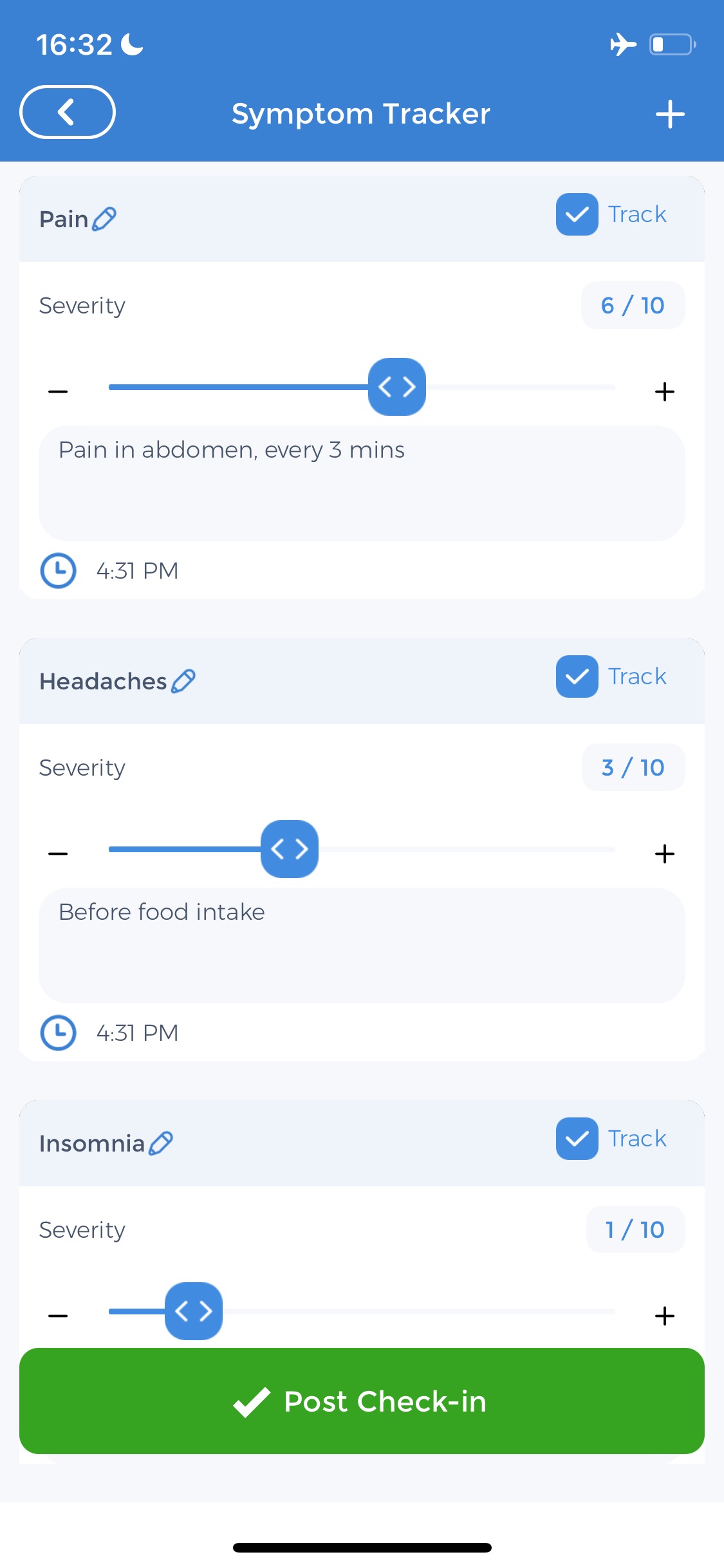
You may quickly input all of your symptoms into CareClinic’s user-friendly check-in option. Checking in helps you to keep track of how you’ve been feeling throughout the course of the day. This also makes it easier to communicate with your healthcare provider, ensuring that you don’t overlook any of your symptoms. The importance of consistency cannot be overstated.
Find the most convenient time to write in the diary entry and stick to it on a regular basis. Sticking to a routine can assist you and your healthcare professional discover correct outcomes and compiling reliable logs, charts, and correlations.
You can include any pre and post BFP symptoms you’re having in the symptom tracker. If you have any medical conditions or prescriptions, including pregnancy, you can start documenting your symptoms before seeking medical help.
Additionally, keeping note of your period days can provide you with a complete picture of your menstrual cycle. This makes it easier to seek medical treatment if you have pregnancy-related symptoms that might lead to difficulties.
You may add your symptoms to the menu by utilizing the symptom ribbon. You can also provide any notes about your mood. This is also an excellent place to make notes about what you believe is causing the condition.
Pregnancy Nutrition Tracking
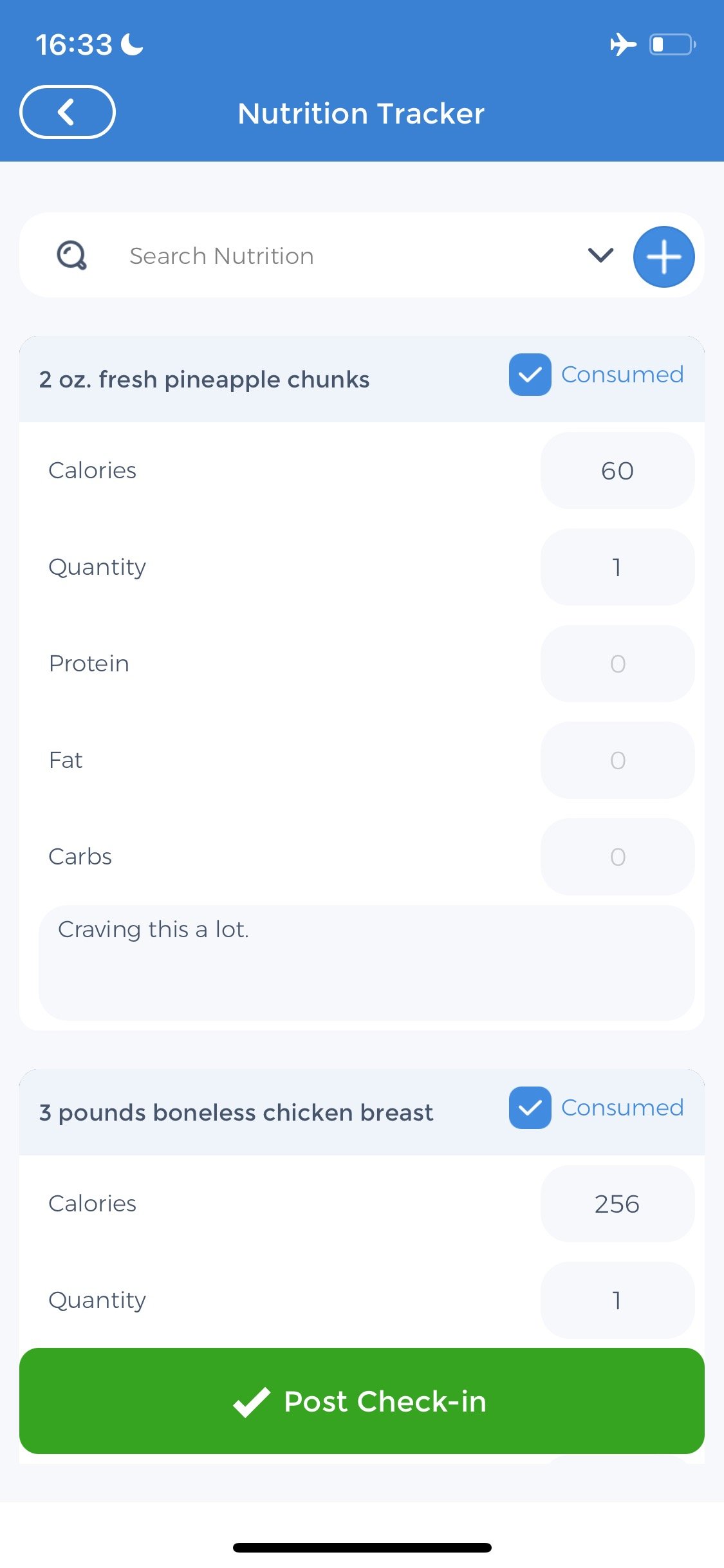
Use CareClinic to track your daily dietary intake and ensure you get the right nutrients. You can easily add meals as shown on the right. You can also track food as you prepare your meal by logging into the platform in advance to check your meals.
In the meantime, this food tracker will help you find and manage your thirst for food. If you have a specific diet to change your diet, you can follow it and think about ways to lead a healthy life.
If you are pregnant, it is important to pay attention to your diet so that you can get the proper nutrition for your baby and your baby’s health. In the meantime, this food tracker will help you find and manage your thirst for food. If you have a specific diet to change your diet, you can follow it and think about ways to lead a healthy life. The nutrition tracker is user-friendly and easy to use. You can add in meal preps in advance so you don’t have to worry about checking in constantly.
The CareClinic platform also has an accessible drop-down menu for selecting any workout along with a nutrition tracker. This allows you to keep track of the number of completed exercises and sets. You can look back and see if there is a correlation between your symptoms and the activities you may have participated in.
Just a tip! Make managing your pregnancy and wellness easier
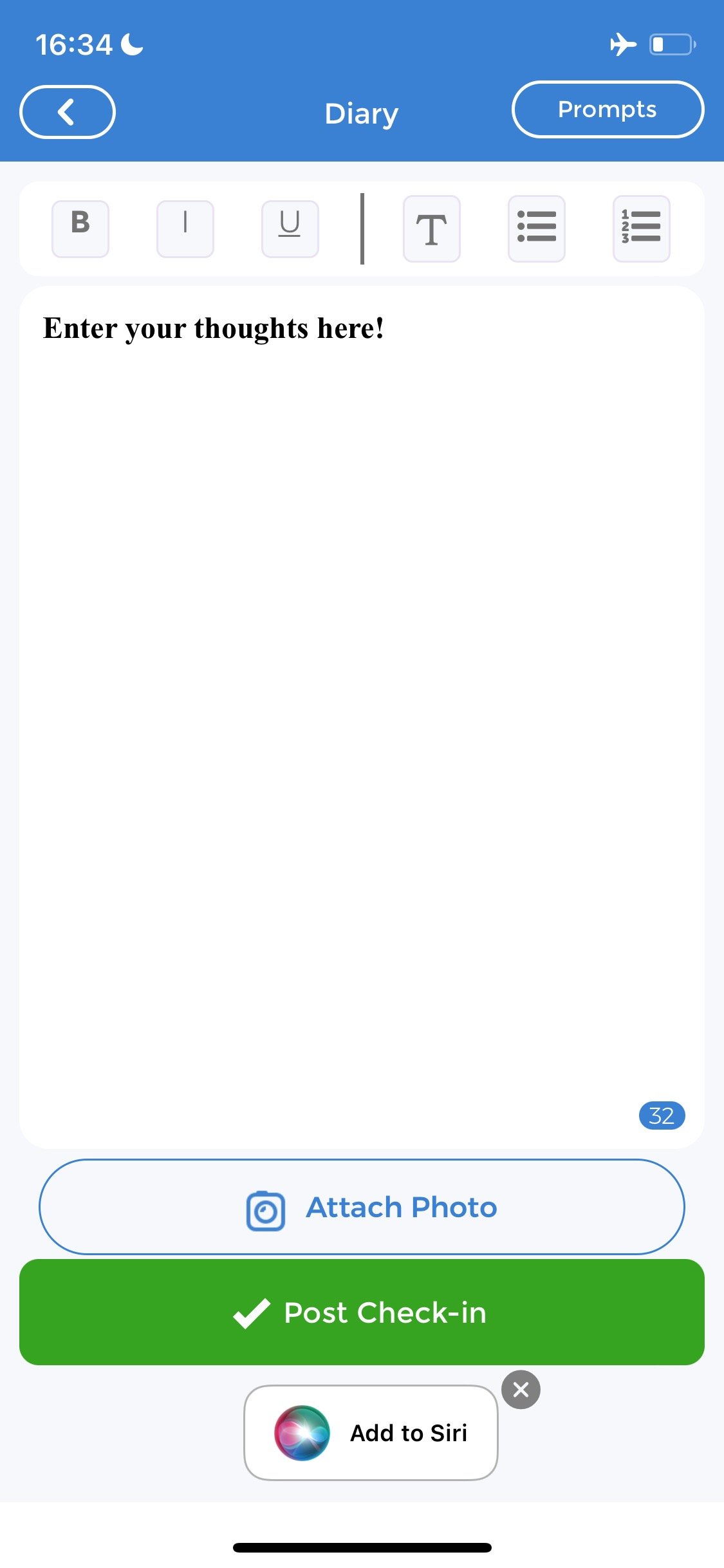
You can enter your daily life by using the diary input function. Use the app’s journal entry feature to track daily activities and events that occur. You will understand how important it is to monitor your period to ensure that you are pregnant. 14 DPO may sound easy when we speak, but in reality, it’s hard to remember the day. Track menstruation to understand the increased cycle, length, and fertility.
The CareClinic platform can be downloaded directly from the App Store if you are an iOS user or from Google Play if you are using an Android device. Finally, tools and resources are also available on the CareClinic website for users who prefer to log in from their desktops.
All three interfaces are user-friendly and easy to access. What are you looking for? Download the app now and track your symptoms and daily activities to help your pregnancy go smoothly.
14 DPO is a significant milestone when you’re trying to conceive. Leverage this blog and the CareClinic platform as a guide to managing your symptoms 14 DPO. If you have any concerns about your pregnancy status, symptoms, or the pregnancy test itself, you should always see your doctor.
An all-in-one platform like CareClinic can help you navigate a healthy pregnancy by getting into the habit of tracking and sticking to it. Start using it now by tapping the banner below.


